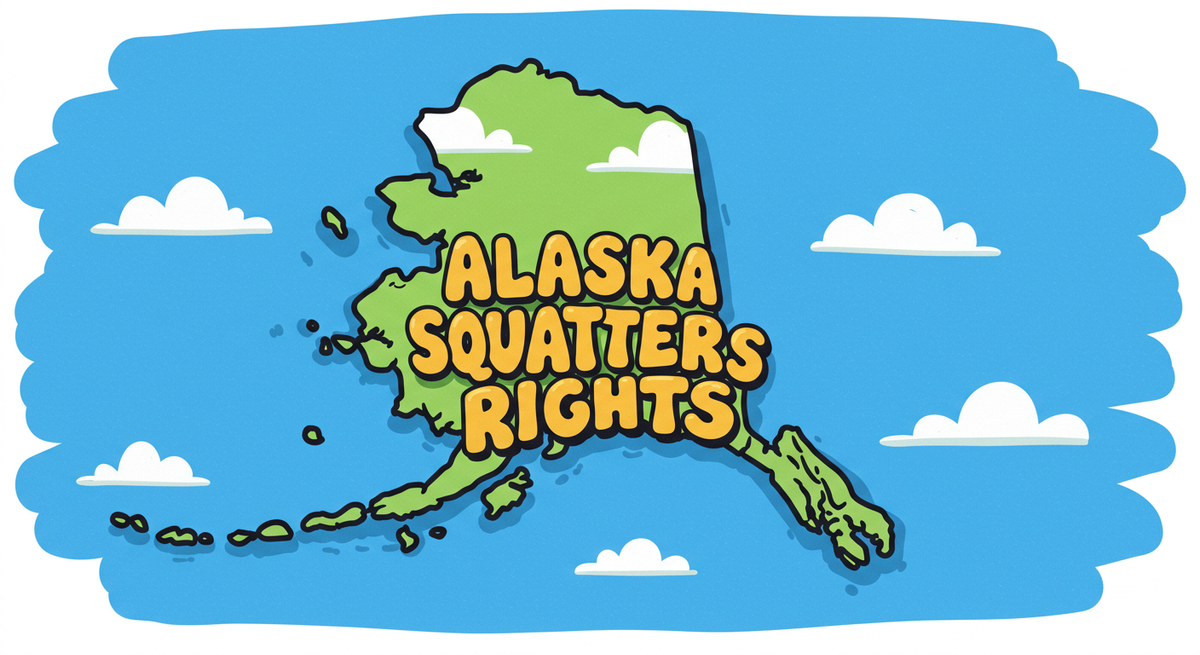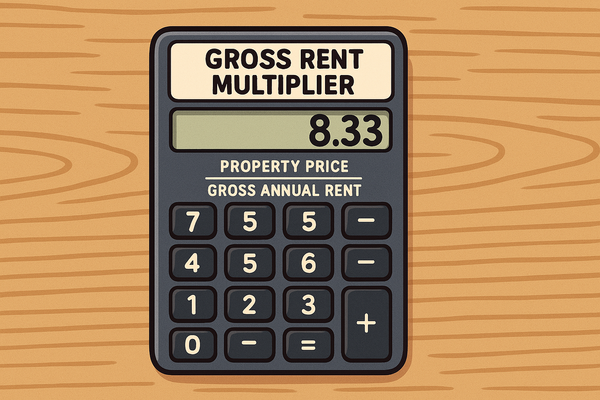Alaska Squatter's Rights Guide: 2025 Laws, 2003 Amendment, and Property Protection
Through a 2003 amendment, Alaska effectively limits successful adverse possession claims to boundary disputes rather than deliberate property takeovers by squatters who knowingly occupy another's property.

A squatter is someone who occupies a property without the owner's permission and sometimes even claims legal ownership. In Alaska, this issue has gained attention following the 2003 Amendment to Alaska Statute on adverse possession laws, which substantially changed how unauthorized property occupation is handled in the state.
For property owners, understanding Alaska's squatter rights laws is crucial to protect your investment and prevent potential loss of property through adverse possession claims.
Key Takeaways
- Alaska requires squatters to occupy property continuously for 10 years (or 7 years with "color of title") before they can file an adverse possession claim
- The 2003 Amendment requires squatters to demonstrate "good faith" belief that the property falls within boundaries they already legally own
- Acting quickly when discovering unauthorized occupants is crucial, as they may still be classified as trespassers rather than squatters
- Alaska forbids self-help eviction methods such as changing locks or shutting off utilities
- Regular property inspections and security measures are the best prevention against squatters
- Alaska's approach is more protective of property owners than many states with shorter timeframes
While Alaska law states that an individual may attempt to gain title and ownership of a property through adverse possession after residing there for 7-10 years, this process has been significantly restricted by the 2003 Amendment.
This change requires squatters to demonstrate not just continuous occupation but also a "good faith" belief that the property is within boundaries they already legally own. This effectively limits successful adverse possession claims to boundary disputes rather than deliberate property takeovers by squatters who knowingly occupy another's property.
Understanding Alaska Squatter Rights in 2025
In Alaska, squatting itself is not legal, though squatters have historically had certain rights through the doctrine of adverse possession. This legal principle allows individuals who occupy abandoned or neglected property without permission to potentially gain legal ownership after meeting specific conditions over a designated period.
It's important to understand the distinction between squatting and trespassing. While trespassing is a criminal offense that involves entering property without permission, squatting typically involves a person living on a property for an extended period without authorization. The distinction becomes important in how law enforcement can respond to each situation.
With the implementation of the 2003 Amendment, Alaska has shifted from treating adverse possession as a purely mechanical time-based claim to one requiring good faith, substantially strengthening property owners' rights.
Alaska Adverse Possession Requirements
For a squatter to claim legal ownership through adverse possession in Alaska, they must satisfy several stringent requirements often referred to as the "OCEAN" framework:
Open and Notorious
The occupation must be visible and obvious to anyone, including the rightful owner. This prevents hidden or secretive occupation from qualifying for adverse possession. The squatter must live openly as if they were the rightful owner.
Continuous
The squatter must occupy the property continuously for either 7 years (with color of title) or 10 years (without color of title) without interruption. Any temporary abandonment resets the clock on the adverse possession claim.
Exclusive
The possession must be exclusive, meaning the squatter cannot share the property with others, including the rightful owner. The squatter must have sole control over the property.
Actual
The squatter must physically occupy the property and treat it as their own. This includes maintaining the property, making improvements, or otherwise demonstrating actual possession. Simply claiming the property without physical occupation is insufficient.
Hostile
In legal terms, "hostile" does not imply aggression but rather indicates that the occupation is without the owner's permission and against their rights. This can include situations where the squatter honestly believes they have a right to the property due to a misunderstanding or error.
Beyond these five fundamental requirements, Alaska law imposes an additional crucial condition:
Good Faith Requirement (2003 Amendment)
Since July 18, 2003, Alaska law requires squatters to demonstrate a good faith belief that the property they are occupying falls within land boundaries they already legally own. This amendment effectively limits successful adverse possession claims to boundary disputes rather than outright property takeovers.
Alaska's 2003 Amendment: The Game-Changing Squatter Law
On July 18, 2003, Alaska implemented a significant amendment to its adverse possession laws, representing the most substantial change to Alaska's squatter laws in recent history. This legislation fundamentally transformed how unauthorized property occupation is addressed in the state.
Key Provisions of the 2003 Amendment:
- Good Faith Requirement: Squatters must now prove they had a good faith belief that the land lies within the boundaries of land they already own
- Elimination of Bad Faith Claims: The amendment was specifically designed to eliminate the ability of bad faith squatters to acquire title to land
- Narrowed Application: The change significantly narrowed the circumstances under which a person can establish title through adverse possession
- Court Interpretations: Subsequent court cases have clarified that the amendment applies to claims where the period of possession began but did not fully vest before July 18, 2003
This legislation represents a decisive response to concerns about adverse possession claims in Alaska. While maintaining the legal concept of adverse possession, the law creates clear limitations on who can successfully claim property rights through this doctrine.
How Alaska's Approach Differs From Other States
Alaska's approach to squatter rights has evolved to provide significant protection for property owners, particularly after the 2003 Amendment. Here's how Alaska compares to other states:
Adverse Possession Timeframes
| State | Required Occupation Period | Additional Requirements |
|---|---|---|
| Alaska | 7-10 years | Good faith requirement since 2003 |
| California | 5 years | Tax payment required |
| Arizona | 3 years | Tax payment required |
| New York | 10 years | No tax payment requirement |
| Texas | 10 years (5 with deed) | Tax payment required |
| Georgia | 20 years (7 with deed) | Tax payment required |
| New Jersey | 30 years | Longest period in the country |
Good Faith Requirement
Unlike many states that still follow the traditional adverse possession doctrine where the squatter's intent or belief is irrelevant, Alaska now requires good faith. This places Alaska among the more property-owner friendly states (along side states like Texas, Florida and Alabama) by limiting adverse possession primarily to boundary disputes rather than deliberate property takeovers.
Recent Legislative Trends
While Alaska has not enacted significant changes since 2003, several states have recently reformed their approaches to squatters:
- New York (April 2024): Explicitly excluded squatters from the definition of tenants, simplifying removal processes
- Georgia (April 2024): Passed the Squatter Reform Act introducing streamlined ejection processes
- Alabama (May 2024): Enacted legislation (HB 182) allowing faster removal through law enforcement
Alaska's 2003 Amendment was ahead of its time in many ways, foreshadowing the current national trend toward strengthening property owners' rights against squatters.
How to Prevent Squatters in Alaska Properties
Prevention remains the most effective strategy for property owners. Here are key preventive measures to protect your property from squatters:
Regular Property Inspections
- Visit vacant properties regularly or hire a property management company to conduct routine inspections
- Document the condition of the property with dated photographs
- Maintain landscaping and exterior appearance to show active ownership
Security Systems and Monitoring
- Install visible security cameras and alarm systems
- Consider smart home security that provides remote monitoring capabilities
- Use motion-activated lighting around the property perimeter
- Install sturdy locks, security doors, and window reinforcements
Property Maintenance
- Keep utilities active but on minimum service levels for vacant properties
- Maintain landscaping and exterior appearance
- Collect mail regularly or have it forwarded
- Schedule timed interior lighting to create the appearance of occupation
Documentation and Signage
- Post "No Trespassing" signs prominently on the property
- Maintain comprehensive documentation of ownership
- Consider filing a "Declaration of Use" with your county property appraiser
- Maintain records of all property taxes paid and improvements made
Community Involvement
- Inform neighbors about vacant properties and ask them to report suspicious activity
- Join neighborhood watch programs
- Consider hiring a house-sitting service for extended absences
Professional Management
- Retain a property management company for vacant properties
- Consider short-term rentals if appropriate for your property
- Ensure quick tenant placement to minimize vacancy periods
These preventive measures not only deter potential squatters but also help establish a clear record of active ownership that can prove invaluable if adverse possession claims arise.
Legal Process for Removing Squatters in Alaska
If prevention fails and you discover squatters occupying your property, Alaska law requires following specific legal processes:
Step 1: Determine Occupant Status
First, determine whether the occupants are trespassers or squatters. Recent entrants may still be classified as trespassers, allowing for immediate removal by law enforcement. If they've established themselves as squatters, you'll need to follow eviction procedures.
Step 2: Serve Notice to Quit
Provide written notice ordering the squatters to leave the premises within a specific timeframe (typically between 5-30 days). The notice should:
- Identify the property
- Demand that squatters vacate immediately
- State that eviction proceedings will begin if they fail to leave
Step 3: File an Eviction Lawsuit
If squatters don't leave after the notice period expires, file an eviction lawsuit in Alaska district court. You'll need to provide:
- Proof of property ownership
- Evidence that the squatters are occupying without consent
- Documentation of proper notice delivery
Step 4: Attend Court Proceedings
Present your case at the scheduled court hearing. The judge will hear both sides and make a determination based on the evidence presented.
Step 5: Obtain and Execute Court Order
If the court rules in your favor, they will issue an order directing law enforcement to remove the squatters. The sheriff's department will enforce this order and escort the squatters off the property.
Important Warning: Avoid Self-Help Eviction
Never attempt to remove squatters yourself through methods such as:
- Changing locks
- Removing possessions
- Threatening occupants
- Shutting off utilities
These "self-help" eviction techniques are illegal in Alaska and could expose you to legal liability.
Landlord Rights and Responsibilities
As a property owner in Alaska, you have specific rights and responsibilities regarding squatters:
Rights:
- Pursue eviction through proper legal channels
- Request law enforcement assistance for trespassers
- Seek damages for property destruction or unauthorized modifications
- File trespassing charges in appropriate circumstances
- Maintain and protect your property from unauthorized entry
Responsibilities:
- Follow legal procedures for removal rather than attempting "self-help" evictions
- Distinguish between squatters and legitimate tenants with legal disputes
- Properly document ownership and unauthorized occupation
- Secure property after removal to prevent reoccupation
- Conduct regular inspections of vacant properties
Understanding these rights and responsibilities helps ensure that you address squatter situations legally and effectively while avoiding potential liability for improper removal procedures.
Tenant vs. Squatter: Legal Distinctions
It's crucial to understand the legal difference between a tenant and a squatter, as the removal processes differ significantly:
Tenants:
- Have lawful permission to occupy the property through a formal or informal agreement
- Pay rent (though may be behind on payments)
- Have established rights under Alaska landlord-tenant laws
- Must be removed through formal eviction proceedings
- Include former tenants whose leases have expired but continue to occupy the property
Squatters:
- Never had lawful permission to occupy the property
- Entered the property without authorization
- Pay no rent and have no rental agreement
- Can be removed through eviction procedures
- Have no legitimate claim to tenancy rights
Key Distinctions in Documentation:
- Tenants have lease agreements, rent receipts, or evidence of payment
- Squatters typically cannot produce legitimate documentation of occupancy rights
- Property owners should maintain records that clearly establish who is authorized to occupy their properties
Properly identifying whether an occupant is a tenant or squatter is essential for determining the appropriate legal process for removal and avoiding potential legal complications.
Legal Help for Alaska Property Owners
Navigating squatter situations may require professional legal assistance. Here are resources for Alaska property owners:
Types of Legal Professionals:
- Real Estate Attorneys: Specialize in property law and can guide you through removal processes
- Property Management Companies: Often have legal departments experienced in handling unauthorized occupants
- Eviction Services: Specialized companies that manage the eviction process for a fee
Cost Expectations:
- Legal consultation: $200-500 per hour
- Unlawful detainer filing: $250-450 plus court costs
- Complete eviction services: $800-2,000 depending on complexity
- Court filing fees: Vary by district
Timeline Considerations:
- Eviction process: Typically 3-5 weeks depending on court scheduling
- Adverse possession defense: Several months if litigation is required
Resources and Referrals:
- Alaska Bar Association Referral Service
- Alaska Legal Services Corporation
- Alaska Court System Self-Help Center
- Local real estate investment associations
Consulting with a qualified attorney early in the process can help prevent costly mistakes and ensure you follow the proper legal procedures for your specific situation.
Case Studies: Alaska Squatter Situations Resolved
Case 1: Remote Cabin in Fairbanks Area
Situation: John owned a recreational cabin 30 miles outside Fairbanks that he visited seasonally. During a winter absence, he discovered someone had moved in, made modifications to the cabin, and claimed to have been living there for over a year.
Resolution: John documented his ownership with property deeds and tax records. Because the squatter had entered after the 2003 Amendment, John's attorney emphasized the good faith requirement. The squatter could not demonstrate any legitimate belief that the cabin was on land they already owned. Following proper notice and court proceedings, the sheriff removed the squatter after the court ruled in John's favor.
Lesson: Regular property checks might have prevented the occupation, but the good faith requirement provided strong legal grounds for removal.
Case 2: Inherited Property in Anchorage
Situation: Sarah inherited a property from her grandfather but delayed visiting for eight months while handling estate matters. When she finally visited, she found a family living there who claimed they had been there for over two years and were working toward adverse possession.
Resolution: Sarah's attorney demonstrated that the squatters could not meet the good faith requirement introduced in 2003, as they had no reasonable belief that the property was within boundaries they already owned. After proper eviction proceedings, the squatters were removed.
Lesson: Prompt attention to inherited properties and understanding Alaska's specific adverse possession requirements protected the owner's rights.
Case 3: Boundary Dispute in Juneau
Situation: Two neighboring property owners discovered that one had built a shed partially on the other's land 15 years ago, creating a potential adverse possession claim.
Resolution: This case represented the type of situation where adverse possession might succeed even with the 2003 Amendment, as the encroaching neighbor genuinely believed the land was within their property boundaries. The parties ultimately settled through mediation, with the encroaching owner purchasing the disputed land strip.
Lesson: Boundary disputes represent the primary situation where adverse possession claims might succeed under current Alaska law, highlighting the importance of proper surveys when purchasing property.
Frequently Asked Questions
General Squatter Rights Questions
Q: What are squatter's rights in Alaska? A: Squatter's rights refer to adverse possession laws that potentially allow someone to claim ownership of property after occupying it openly, continuously, and without permission for 7-10 years while meeting specific legal requirements, including demonstrating good faith.
Q: Is squatting illegal in Alaska? A: Yes, unauthorized occupation of property is illegal in Alaska. Squatters can be removed through proper legal eviction procedures.
Q: How long does someone have to squat on property in Alaska to claim ownership? A: In Alaska, a squatter must continuously occupy a property for 10 years (or 7 years with color of title) before they can file an adverse possession claim. They must also meet several other requirements, including demonstrating good faith.
Q: What is the "good faith" requirement in Alaska? A: Since 2003, Alaska requires squatters to demonstrate they had a good faith belief that the property they are occupying falls within land boundaries they already legally own. This effectively limits adverse possession claims primarily to boundary disputes.
Prevention and Removal
Q: How can I prevent squatters from occupying my property? A: Regular property inspections, security systems, property maintenance, "No Trespassing" signs, and professional property management are effective prevention strategies.
Q: How do I remove squatters from my property in Alaska? A: You must follow proper legal eviction procedures, including serving notice to quit, filing an eviction lawsuit if necessary, and obtaining a court order for removal.
Q: Can I physically remove squatters myself? A: No. Self-help evictions are illegal in Alaska. Property owners must use legal processes to remove unauthorized occupants.
Q: Can I turn off utilities to force squatters to leave? A: No. Turning off utilities is considered a self-help eviction tactic and is illegal in Alaska. This could potentially expose you to legal liability.
Legal Implications
Q: What was the 2003 Amendment to Alaska's adverse possession law? A: The 2003 Amendment added a good faith requirement to adverse possession claims, meaning squatters must prove they honestly believed the property was within boundaries they already legally owned.
Q: How does Alaska's approach to squatters differ from other states? A: Alaska's 7-10 year requirement is moderate compared to other states, but the good faith requirement added in 2003 makes Alaska more property-owner friendly than many states.
Q: What's the difference between a squatter and a trespasser? A: Trespassing is a temporary unauthorized entry, while squatting involves sustained occupation of a property. Recent unauthorized entrants may still be classified as trespassers, allowing for immediate removal by law enforcement.
Special Situations
Q: What if the squatter was previously a tenant? A: If the occupant was previously a legitimate tenant, they would be classified as a holdover tenant rather than a squatter, and specific eviction procedures for holdover tenants would apply.
Q: What if I'm buying a property with squatters already living there? A: The purchase should be contingent on the removal of unauthorized occupants. The current owner should complete the removal process before closing, or you should consult with an attorney about assuming this responsibility.
Q: What if squatters damage my property? A: Document all damage with photographs and detailed descriptions. You may pursue civil remedies for financial compensation after the squatters have been legally removed.
Q: What properties are most likely to attract squatters? A: Vacant, abandoned, or foreclosed properties are most vulnerable, particularly those that appear unmonitored or neglected. Remote recreational properties that sit empty for extended periods are especially at risk in Alaska.
Conclusion
Alaska's approach to squatter's rights has evolved significantly, with the 2003 Amendment representing a transformation that strengthens property owners' rights while maintaining the historical legal doctrine of adverse possession under strictly defined circumstances.
The 7-10 year timeframe for adverse possession claims remains in place, but the good faith requirement makes successful adverse possession significantly more challenging to achieve. Property owners now have greater protection against deliberate adverse possession attempts.
For property owners, the keys to protecting your investment include:
- Regular monitoring and maintenance of properties
- Prompt action if unauthorized occupants are discovered
- Following legal procedures rather than self-help eviction measures
- Maintaining comprehensive documentation of ownership and property conditions
- Considering professional property management for vacant properties
By understanding Alaska's squatter rights laws and taking preventive measures, property owners can significantly reduce their risk of unauthorized occupation and potential adverse possession claims.
Resources and References
- Alaska Statutes § 09.45.052: Adverse Possession
- Alaska Senate Bill 93 (2003) - Alaska State Legislature
- No Room for Squatters: Alaska's Adverse Possession Law (PDF) - Duke Law Scholarship
Disclaimer: This article provides general information and does not constitute legal advice. Consult with a qualified attorney for guidance on your specific situation.





